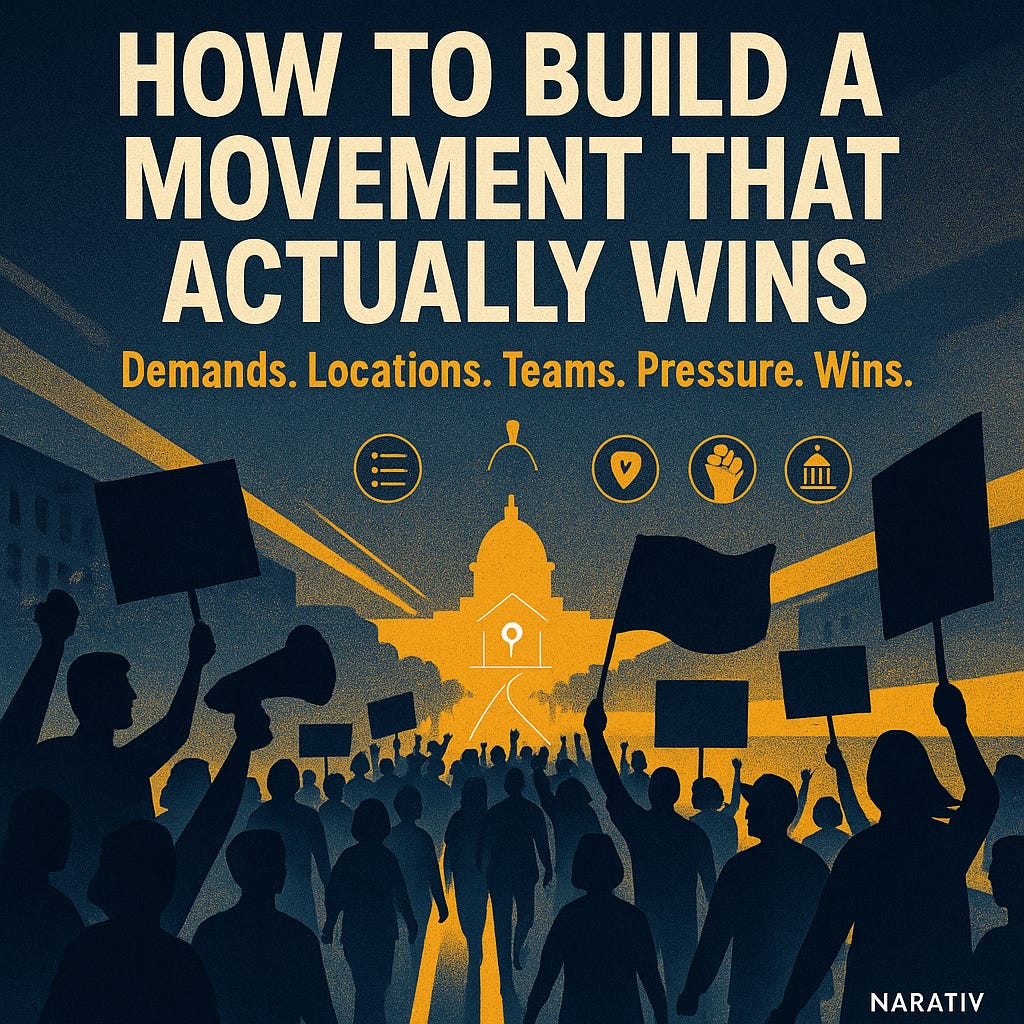New Analysis: How To Actually Stop Authoritarianism
Movements that win don’t just show up—they force specific changes through sustained strategic pressure
The streets filled with protesters after Trump’s first election. Massive crowds, powerful signs, passionate chants. Then everyone went home. Nothing changed. The same thing happened for No Kings 1 and 2. Trump shrugs and the administration continues dismantling democratic institutions while the resistance keeps shouting into the void.
This pattern repeats because American protest movements confuse visibility with effectiveness. Showing up isn’t enough. Emotional catharsis isn’t strategy. If you want to stop authoritarianism, you need to understand how successful resistance movements actually work—and why most fail.
We’ve analyzed resistance movements from South Africa, Israel, Ukraine, Belarus, Georgia, and Russia, and asked experts in the field to diagnose their successes and failures, as well as describe the characteristics that make them effective. What separates movements that win from movements that disappear isn’t passion or numbers. It’s structure, strategy, and sustained pressure on winnable objectives. In other words: a plan, planners, organizers, and funders.
The historical record is clear: Poland’s 1980s Solidarity movement united workers, students, intellectuals, and church groups into a disciplined nonviolent force that eventually forced semi-free elections in 1989. Georgia’s 2003 Rose Revolution saw sustained street protests force an authoritarian president to resign. Ukraine’s Maidan protesters camped in Kyiv’s Independence Square for months until President Yanukovych fled. Armenia’s 2018 Velvet Revolution used weeks of peaceful marches to force the longtime ruler’s resignation. In early 2023, over half a million Israelis took to the streets nightly against judicial overhaul plans, forcing Prime Minister Netanyahu to pause his proposal. These movements succeeded not through raw emotion or massive crowds alone, but through focused, nonviolent, strategic pressure on specific targets. They stayed disciplined. They built broad coalitions. They sustained the fight until they won concrete victories.
Premium subscribers can access a deeper dive below.
Keep reading with a 7-day free trial
Subscribe to Narativ with Zev Shalev to keep reading this post and get 7 days of free access to the full post archives.



